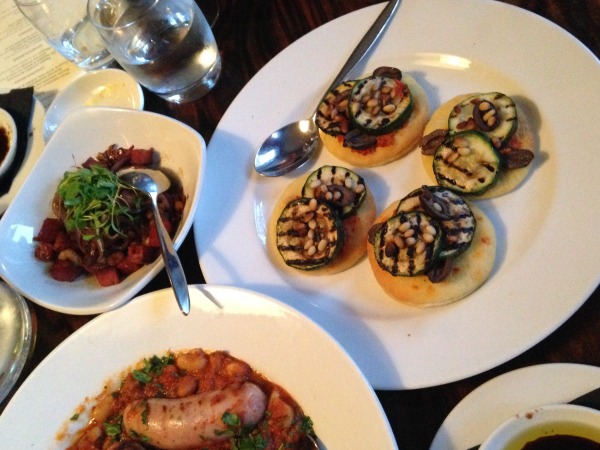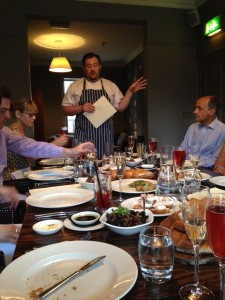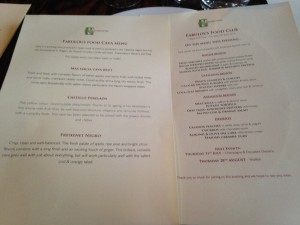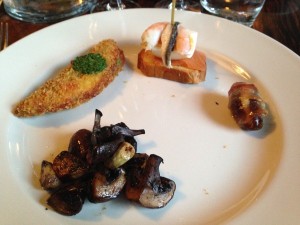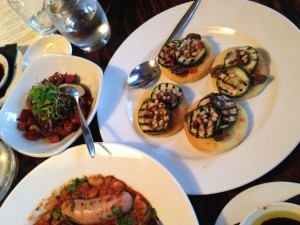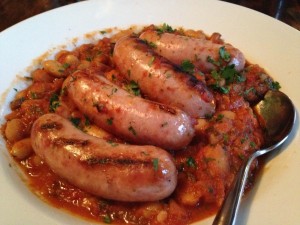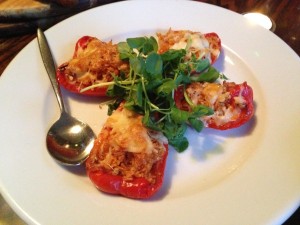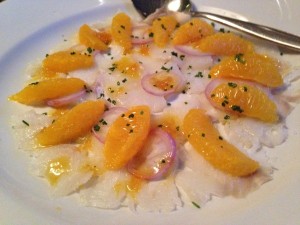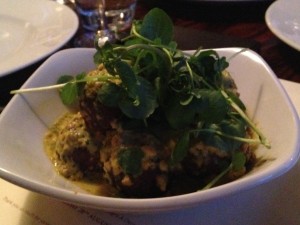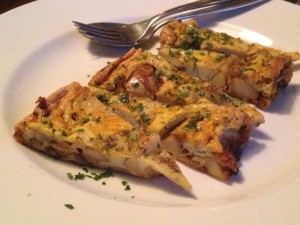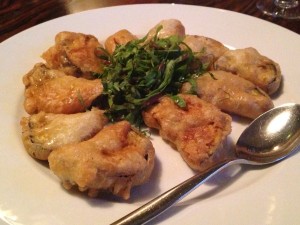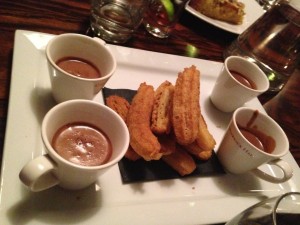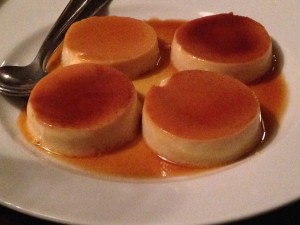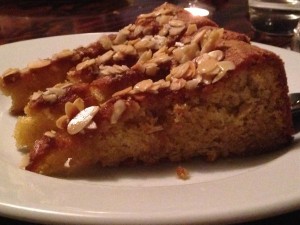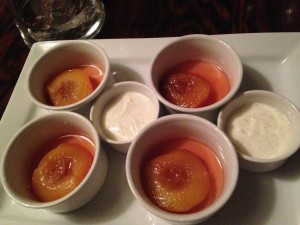If you’ve not yet been to one of Goldbrick House‘s “Fabulous Food Club” nights, you’re missing out. The ticketed evenings take place once a month, with a different theme every time. Ultimately, it’s a private dining event where guests have the chance to try a wide range of different dishes that fit the month’s theme, all carefully chosen and prepared by Goldbrick head chef Christian Wragg, who also sits with the diners to talk them through the dishes and to answer any questions.
There’s plenty to look forward to later on this year. In July, it’s a night of champagne and decadent desserts, while August’s theme is shellfish. These are followed by “Best of Beef” in September, stews in October and Thanksgiving in November, before the FFC nights take a break over Christmas, to be resurrected in 2015.
We were lucky enough to attend the June event, and having been a guest at Goldbrick’s BBQ night a few years ago, I knew that these Fabulous Food Club nights required two things: an empty stomach, and an elasticated waistband. I arrived with both.
The evening featured four courses, each accompanied by a glass of Cava: three savoury courses, each from a different region of Spain, and a set of desserts to finish. The word “course” is deceptive, though – for each, we were presented with a range of different tapas dishes to be shared amongst the table.
We began with hunks of a delicious brioche-like bread, served with both butter and olive oil, with regular FFC attendees warning newbies not to gorge on bread with the risk of being too full for some of the delights to follow. And they were right to do so, with the first course alone consisting of four Basque region-inspired dishes. The area is known for its pintxos (tapas skewered on a piece of bread), and we enjoyed a smoked salmon, egg, shrimp and anchovy version, designed to reflect the region’s coastal areas.
Our Basque tapas also included breaded and fried sardines stuffed with roasted red peppers, roasted mushrooms liberally seasoned with garlic and rosemary oil, and – the highlight for many of us – whole dates wrapped in salty bacon and goats’ cheese, and drizzled with a lemon syrup. Despite trying to conserve space for the next course, it was impossible not to reach for a second…
Course two took us to Catalonia: an area, we were told by Christian, that tends to use a lot of chillies. His prawn dish with chorizo and chillies had a little heat, although not as much as any of us were expecting, and it was interesting to see the variety in the dishes that had been selected for this region. Red peppers stuffed with manchego and rice fell a little short on the flavour front, while the Catalan sausage and beans with a tomato and herb sauce was also a little uninspiring. However, I loved the light dough of the coca (mini pizza-style flatbreads), topped with grilled courgettes, sliced olives, pine nuts and a lovely, fresh-flavoured romesco: a nut and red pepper sauce for which the region is known.
Our final stop on our culinary tour of Spain was Andalucia. Christian explained that this is the main olive oil producing area in the country, with its cuisine characterised by plenty of curing and preserving, as well as frying.
The preserved element of the meal wasn’t to everyone’s taste, but I absolutely loved it. Thin slices of salted cod (an acquired taste…) were paired with juicy, sweet orange segments and thinly sliced red onion: a cracking combination of salt, sweet and bitter.
We were also presented with meatballs in an incredible saffron and almond sauce (sadly the meatballs were a little overdone), and a perfectly cooked potato tortilla, which is popular throughout Spain. By far my favourite of the Andalucian dishes, however, was the melt-in-the-mouth deep fried aubergine fritters, drizzled with honey. I’ll be attempting to replicate these at home…
And so, with waistbands bulging (you now see why the elastication was needed…) it was onto dessert: a selection of four different Spanish-inspired desserts with no particular region in mind.
The churros were served with a fantastically smooth chocolate sauce, but while they had the requisite crunch on the outside, the soft interior was missing. We all loved the caramel flan – the Spanish version of a crème caramel – which was sweet, wobbly and the perfect consistency.
Most of us were too full for the rich and stodgy (in a good way) almond and olive oil cake, but all tried a little – and the highlight for me was the Calanda peaches (Calanda being a well known peach-producing town in Spain), each half served in a sweet white wine syrup and accompanied by yoghurt, the flecks of vanilla easily distinguished both in look and flavour.
While there were some elements of the meal that didn’t really appeal to me, the beauty of the event was that there was a huge range of different things to try: if you didn’t like one thing, you’d give something else a go. I loved the social aspect of the evening too, with all 12 diners seated around one table, and the sharing nature of the dishes meaning that you spent the evening chatting with a number of new people.
With all events priced at £27.50 (plus booking fee), it’s a great way to experience a wide range of different dishes in an informal and friendly environment, and with the chance to chat to Christian about the dishes and ask him any other culinary questions you may have.
To find out more about upcoming Fabulous Food Club nights, visit the Goldbrick House website – and to book, see the Goldbrick House Eventbrite page.
Please note: this meal was received free of charge, but in no way impacted on our opinion. We were not obliged to write a positive review, and the venue did not see this review before it was put up on the site.
